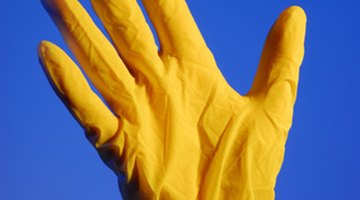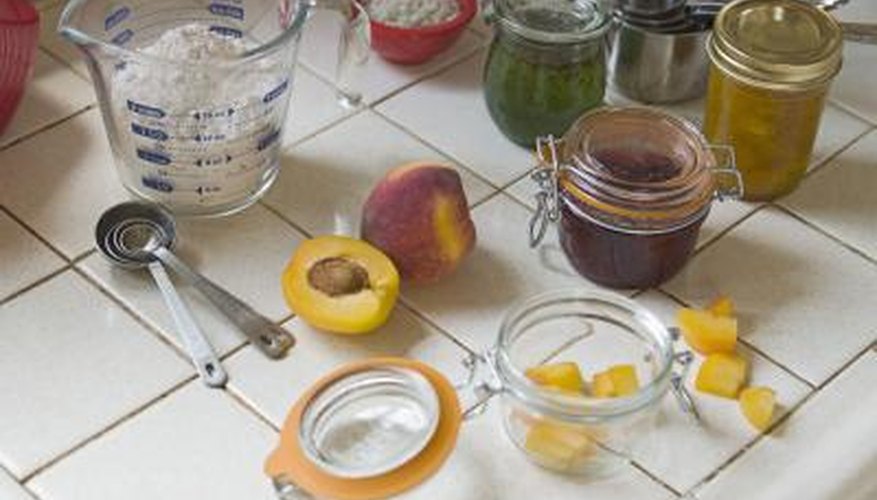Limescale forms as hard water stains build up. Common areas for limescale build-up are the kitchen and bathroom. Natural stone tiles are frequently used in these areas because of their sturdiness and aesthetic appeal. Common home remedies for removing limescale, such as vinegar and lemon juice, cannot be used on natural stone tile because the natural acids found in them can damage the stone. Remove limescale from your tiles with supplies that won't cause further damage as you remove the build-up.
- Limescale forms as hard water stains build up.
- Common areas for limescale build-up are the kitchen and bathroom.

Mix one-half cup ammonia into a bucket with one gallon warm water. Place rubber gloves on your hands to keep the ammonia solution from drying out your skin.
Dip a 0000-grade fine steel wool pad into the ammonia solution. Gently scrub the surface of the natural stone where the limescale is located. Allow the ammonia solution to sit on the stone tiles for a few minutes to loosen the build-up.
- Dip a 0000-grade fine steel wool pad into the ammonia solution.
- Allow the ammonia solution to sit on the stone tiles for a few minutes to loosen the build-up.
Dampen a clean cloth with water. Wipe off the natural stone tiles to remove the ammonia and loosened limescale. Repeat Steps 2 and 3 until all the scaly build-up is gone.
Clean your natural stone tiles with a natural stone cleaner to remove the ammonia and last traces of lime build-up.
TIP
Wipe your tiles dry each time they come in contact with water to prevent limescale build-up from occurring. Keep a squeegee near the shower to remove water from tiles after each use.
WARNING
Avoid commercial limescale removers unless they're made specifically for natural stone surfaces, such as granite or marble.
